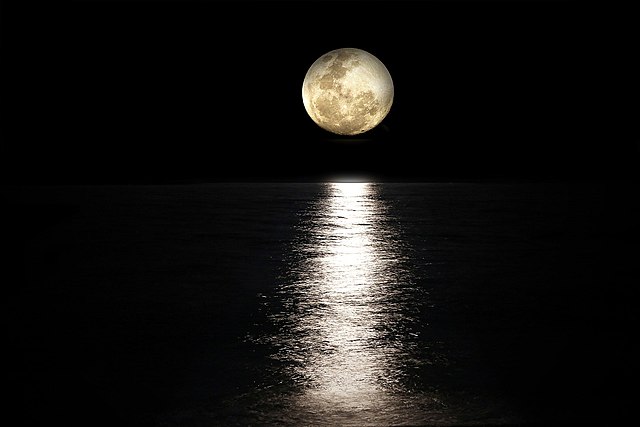
The Eight Phases Of The Moon
Us humans down on Earth have gazed up at the Moon since time immemorial, in awe of its seemingly miraculous power to shapeshift. Its ‘magic’ has become the subject of many ancient tales and myths. Yet of course the Moon does not change shape. Instead, what changes is our view of it. The Moon is non-luminous; in other words, it doesn’t give off any light of its own. We are able to see it because it reflects the light from the Sun: this reflected light is ‘moonlight’. Half of the Moon’s surface is illuminated by the Sun, but we see different amounts of this surface at different times, depending on our location on Earth, the Moon’s orbit around the Earth, and the Earth’s orbit around the Sun.
Shapes And Phases
Most of us can easily recognise a crescent moon and full moon. Some might also know about the harvest moon – the extra-bright full moon which shines at autumn harvest time when the Earth’s equator is almost directly in line with the centre of the sun; or the blue moon – the rare appearance of a second full moon in a calendar month. But did you realise that the various shapes of the Moon are classified into eight phases, which all appear to us during the course of a lunar month (approximately 29.5 days)?
The Hidden New Moon
The first phase is the new Moon. At this time, the Moon is barely perceptible or seems totally invisible, but it hasn’t actually disappeared. It’s hidden because the illuminated part of it is facing away from Earth. The new Moon is also sometimes known as the dark Moon.
The Waxing Crescent
Then, as the Moon orbits, the next phase takes place: the waxing crescent. ‘Waxing’ is what the Moon does when it seems to be getting bigger. The crescent moon marks the beginning of the Islamic calendar, which is based on the lunar cycle. In Greek mythology, the Moon is personified as the Goddess Selene, who drives her silver chariot across the night sky.
The next phase is first quarter, when the Moon has completed one quarter of its orbit around Earth, and half the Moon’s visible surface is illuminated. This is sometimes known as a half-Moon, because half its visible surface is illuminated and the other half is in shadow.
Then it’s waxing gibbous. ‘Gibbous’ means a rounded shape, greater than a semicircle but lesser than a circle. The features of the Moon’s surface, such as its craters and mare (vast basaltic plains formed by ancient volcanic activity), become more visible.
The Mythic Full Moon
The next phase, at around halfway through the lunar month, is the full Moon, when its face is turned fully towards the Sun. The full moon is rich in mythology and is often associated with witchcraft and werewolves. You’ve probably aware of the ancient idea of the man in the Moon: the image of a human face, head or body perceived in the dark markings on the Moon’s surface. In the folklore of some East Asian cultures, the Moon’s markings are interpreted as the shape of a rabbit or hare.
Waning
Waning gibbous is the next phase; ‘waning’ means the Moon seems to be getting smaller. According to Greek mythology, the waning gibbous moon represents Demeter, goddess of agriculture and harvest.
Then, about one week after the full Moon, it’s third quarter, when half of its visible surface is again illuminated. As with the first quarter, it looks like a half-Moon. For astrologists, the third quarter marks a time of reflection and transformation.
The final stage is waning crescent, when less than half of the visible surface of the Moon is illuminated. As with the waxing crescent phase, a waning crescent Moon provides a good opportunity for stargazing because the it is quite faint in the sky, making the stars clearer.
A Look Up In The Night
Then the eight phases of the Moon begin again. What phase will tonight’s Moon be in? For further information about its phases, check out the useful websites linked below.